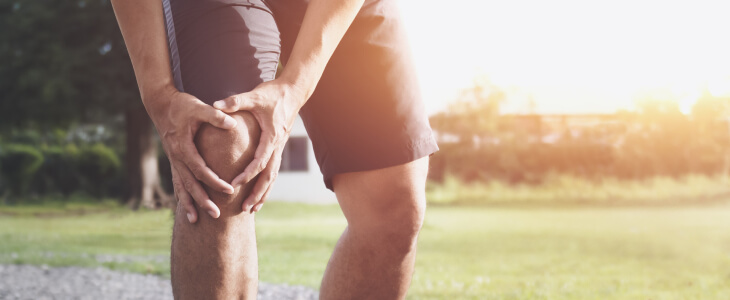At Long Island Spine Rehabilitation Medicine, where our physiatrists specialize in nonsurgical pain relief and restoration of function, we have diagnosed and treated many cases of jumper’s knee (patellar tendonitis). We know all too well how painful and intrusive the condition can be, particularly if treatment is delayed.
If you are suffering from knee pain, contact us now so we can get to the root of the problem, promptly address your symptoms, and have you comfortable and active as soon as possible. Early intervention is vital because jumper’s knee typically takes 6 weeks to heal and can take considerably longer if treatment is delayed.
Long Island Spine Rehabilitation Medicine’s doctors take a holistic approach to medicine, using a broad range of traditional and complementary therapies, often in combination, for optimal results. We are well aware that no two patients have identical needs, so we develop an individualized treatment plan for each one, taking into account pre-existing conditions, past injuries, and personal preferences.
What Is Jumper’s Knee?
Jumper’s Knee is an inflammation of the patellar tendon, the tendon that connects the kneecap (patella) to the shin bone (tibia). Inflammation of a tendon can occur in various parts of the body, including the shoulder (rotator cuff tendonitis), elbow (tennis elbow or golfer’s elbow), wrist, and Achilles tendon. Jumper’s knee causes pain and tenderness at the front of the knee, just below the kneecap, especially when the affected party walks, runs, or jumps.
What Causes Jumper’s Knee?
Jumper’s Knee is typically caused by repetitive stress on the patellar tendon, so it is a common sports injury, especially in sports that involve frequent jumping and landing, such as basketball, volleyball, track and field, and soccer. As with all “sports injuries,” however, jumper’s knee can also occur as a result of chores of recreational activities that involve repeated bending or other movements that put stress on the knee, such as:
- Stair climbing
- Bicycle riding
- Jumping rope
- Dancing
- Gardening
- Working while squatting
Risk Factors for Developing Jumper’s Knee
Factors that may increase the risk of developing Patellar Tendonitis, include:
- Participation in sports that involve high impact on the knees
- Sudden increases in physical activity or training intensity
- Poor muscle strength and flexibility
- Misalignment of the leg, ankle, and foot
- Previous injuries to the knee
Symptoms of Jumper’s Knee
The primary symptom of jumper’s knee is pain at the base of the kneecap, which may initially occur only during relatively strenuous physical activity but can progress to pain during one’s normal daily routine. Other symptoms include:
- Tenderness and swelling of the knee
- Weakness or instability of the knee
- Stiffness, especially in the morning or after prolonged periods of sitting
- Pain that worsens with activities like jumping, running, or squatting
How Jumper’s Knee Is Diagnosed
Diagnosis of patellar tendonitis begins with a thorough physical examination by our doctors in conjunction with a careful view of your medical history. Typically, we will then take X-rays to rule out a bone fracture or dislocation, then use ultrasound to provide a clear view of any tear in the patellar tendon and/or an MRI scan to examine the extent of soft tissue damage.
Treatment Options
Our holistic approach to treating Patellar Tendonitis at Long Island Spine Rehabilitation Medicine includes a variety of non-surgical options designed to reduce pain, promote healing, and restore function. These include:
Customized Physical Therapy
Tailored exercise programs, specifically designed to strengthen the muscles around the knee and improve flexibility can significantly aid in the recovery process. It is essential that physical therapy is overseen by a knowledgeable practitioner, however since overstretching can worsen patellar tendonitis.
Corticosteroid Injections
In cases of severe pain, injections of a corticosteroid and a local anesthetic may be used to provide relief from inflammation and pain.
PEMF (Pulsed Electromagnetic Field) Therapy
This non-invasive treatment stimulates cellular repair through electromagnetic fields, promoting healing. PEMF also reduces both pain and swelling and increases blood flow.
PRP (Platelet-Rich Plasma) Therapy
PRP therapy involves injecting the patients own blood, enriched by a concentration of the patient’s own platelets, into the affected tendon, boosting the natural healing processes.
Acupuncture
Acupuncture has relieved pain and accelerated the healing process for thousands of years. Modern Western medicine now recognizes its efficacy in reducing inflammation, increasing circulation and oxygenation of tissues, and releasing natural opioids that act as analgesics —
all of which speed recovery and enhance quality of life.
Hyaluronic Acid Injections
Although more commonly used for knee osteoarthritis, hyaluronic acid injections, which provide lubrication and reduce pain in the knee joint, often provide relief for patients suffering from jumper’s knee.
Why Early Intervention for Patellar Tendonitis Is Crucial
Although jumper’s knee may begin as a relatively minor irritation, left untreated it can worsen and become debilitating or even disabling. This is why early intervention is crucial. Procrastinating is a serious mistake because it will likely result in thickening of the affected tendon which will increase the pain. A delay in treatment may also lead to a larger tear or development of a cyst, either of which may require surgery.
Contact Our Experienced Knee Pain Specialists Today
Contact the capable, caring doctors at Long Island Spine Rehabilitation Medicine now for the personalized treatment you deserve. You will find our physiatrists knowledgeable, skilled, and accommodating. More than that, we will be sensitive to your individual needs. Because we are committed to the idea that healing is a collaborative process, we will work with you to make establishing and maintaining your health our top priority.
